Are you tired of seeing the same photos on Instagram again and again?
Those photos of people pretending to be “travelers”?
You know the ones I’m talking about – the perfectly posed shots of that old fisherman with his cormorants (in China, the practice of using cormorants to assist fishermen in catching fish has become a staged photography technique rather than a common fishing method. Due to advancements in fishing technology and the decline in fish populations, this technique is no longer widely used) or that old woman fixing fishing nets. Instead, it’s time to embrace the true essence of travel photography or at least to make an honest choice!
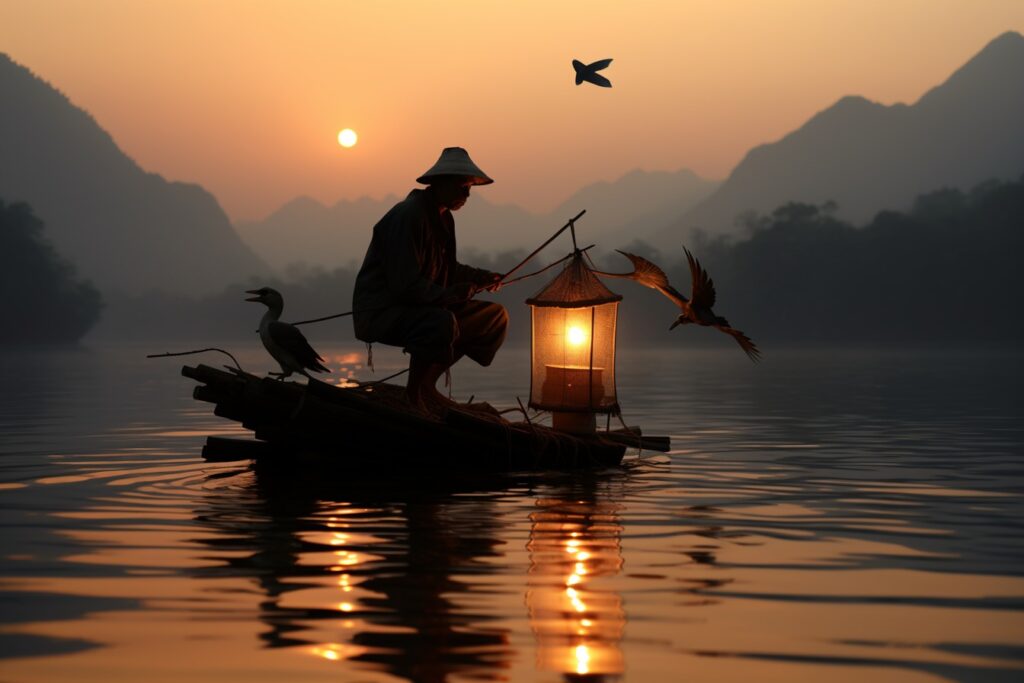
Cormorant fisherman generated with Midjourney to illustate this famous staged photo
Travel vs Staged photography or “Staged Travel Photography”?
Let’s start by defining what each of these terms mean.
Travel photography is all about capturing the real moments and experiences you encounter while exploring the world. It’s about being in the right place at the right time and capturing the essence of a place, whether it’s the bustling streets of Hanoi or the serene beauty of the Mountain of Ladakh.
Staged photography, on the other hand, is about creating a perfect image that may not necessarily reflect reality. It’s about setting up the perfect shot, complete with props, costumes, and carefully orchestrated poses.
Now, don’t get me wrong, staged photography can be fun and creative. There’s nothing wrong with wanting to create a beautiful image that tells a story.
I personally do a lot of staged photography… but for commercial purposes only. It is definitely a popular technique in the advertising and marketing industry to create impactful visual content. By enhancing and modifying the reality through carefully planned and executed staged photos, you can effectively capture the attention of your target audience. Staging allows you to control and fine-tune elements such as lighting, props, composition, and models to ensure the desired message or product is effectively conveyed. It’s a creative way to engage consumers and make your products or services stand out.
But when it comes to travel photography, I think there’s something so special about capturing the raw and unfiltered moments that make a place unique so for me it is the opposite.
Staged Photography: Unrealistic Expectations
I think one of the biggest problems with staged photography in travel is that it often creates unrealistic expectations. When you see a perfectly posed photo of a monk standing alone in front of Angkor Wat, it’s easy to imagine yourself in that same spot, having the time of your life. But the reality is often very different. Angkor Wat is usually crowded with tourists, and you’ll be lucky or well guided if you can even get a clear shot without someone photobombing you or even better with a monk coming in your frame!
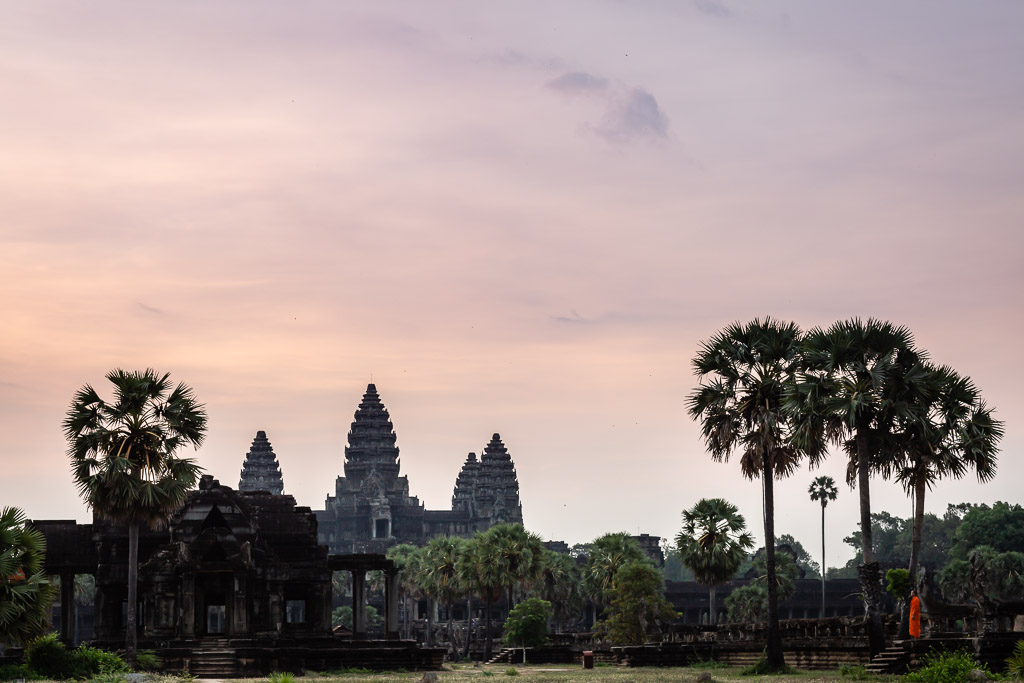
Lonely Monk at sunrise in Angkor Wat during pandemic (non staged)
Staged photography is a form of photography where the subjects and scenes are carefully arranged and posed to create a desired effect. While it can result in visually stunning images, one drawback is that it often creates unrealistic expectations. The carefully curated settings and perfectly posed models can give viewers a false sense of reality. This can sometimes lead to disappointment or feelings of inadequacy when individuals compare their own lives to the idealized images they see in staged photography.
Staged Photography: How does it work? Example of a “random” old woman
Let’s travel from Cambodia to Vietnam now.

Vietnamese woman fixing nets generated with Midjourney to illusrtate this famous staged photo
I am sure you have seen that captivating image of a woman fixing her net. It has gained a lot of popularity over the years. However, it has come to light, for a long time I know, that this photograph was actually staged. According to my guest, Laurent G. who spent 2 weeks with us last year, the entire shoot was meticulously organized by a fixer as he experimented it himself. The fixer set up the scene inside a hangar, strategically spreading fishing nets around an elderly woman who was dressed up and adorned with a traditional conical hat. Placing her in the center, he opened a large door to allow natural light to flood in, adding to the overall aesthetic appeal. To capture the iconic top-down shot, a platform is there, enabling photographers to capture the perfect lighting, gesture, and nets arrangement.
Interestingly, many individuals have attempted to replicate this picture, striving to achieve the same level of perfection that was captured in the original. It has become a competition of who can produce the best copy and paste, with the ultimate goal of winning a coveted prize.
The Essence of Travel Photography
Travel Photography is not just about taking Instagram-perfect shots of that “random “old Vietnamese woman.
It’s about immersing yourselves in a culture, stepping out of your comfort zone, and connecting with people and places on a deeper level. This form of photography allows you to explore different perspectives and viewpoints, encouraging you to seek out hidden gems and find beauty in the ordinary. It requires patience and timing, as waiting for the right light or moment can transform an ordinary scene into something extraordinary. Travel photography is about telling stories and conveying the essence and emotions of a place through your images. It allows you to share your personal experiences and perspectives, inspiring others to explore the world themselves. Ultimately, travel photography is an art form that combines technical skill, creativity, and a sense of adventure, capturing moments that will stay with you forever.
Just Be Honest with the Photographer you are
Today we almost need to ask every photographer to indicate if their photographs are staged or represent real moments (not talking about AI here). Misrepresenting staged photos as genuine moments may mislead viewers and compromise the integrity of the art form as it often results at any important contest worldwide.
However, it’s important to remember that photography, like any form of artistic expression, can be subjective and open to interpretation. While some photographers may prefer capturing candid, authentic moments, like me others may focus on creating staged images to convey a specific concept or idea.
Ultimately, it is up to the photographer to communicate honestly about their intentions and artistic choices. Similarly, viewers should approach photography with an open mind, appreciating both staged and candid moments for their artistic value.
Conclusion
Next time, you’re out exploring the world, think again if you prefer like me to put down the props and embrace the chaos. I would personally look for photographers sharing with me the real location with all the uncertainty you may face. I would learn so much more from all the spontaneous moments and I would for sure become a better photographer. I would definitely prefer to capture the real moments, and the unexpected moments than the all arranged ones!
Don’t worry about getting the perfect shot – sometimes the imperfect ones are the ones that will make you love them the most.
Let me tell you about this series of pictures from our photography workshop in Vietnam back in September 2024. We were on a mission to capture the art of making conical hats in a traditional way, but luck wasn’t on our side that day. We searched high and low in a small village in central Vietnam, but couldn’t find a single person making those hats. Just when we were about to give up, a woman appeared out of nowhere and introduced us to two families who had the secret knowledge. We met two old women who were experts at making these hats, and it was truly a sight to behold. However, one of the scenes was far from picture-perfect, with a modern fan whirring away behind one of the women, a random calendar nonchalantly hanging on the wall, and to our astonishment, a motorbike casually parked inside the house.
Undeterred by these unconventional elements, I rallied my fellow photographers to think outside the box. We decided to embrace the challenge and incorporate the motorbike into some of our shots, avoid the fan using other elements. It was a daunting task, but we discovered that creativity knows no bounds. We played with lighting and composition, turning an unexpected background into a unique storytelling opportunity. After all, who could have predicted that a motorbike would become an integral part of the conical hat-making narrative? Sometimes, the most memorable moments arise from the unlikeliest of situations.
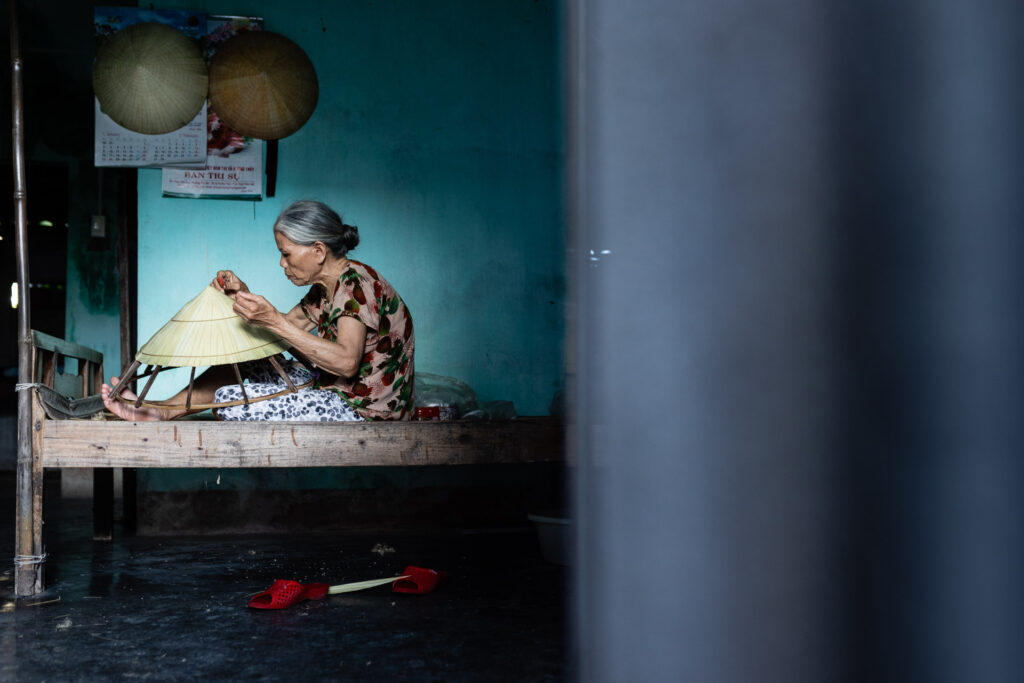
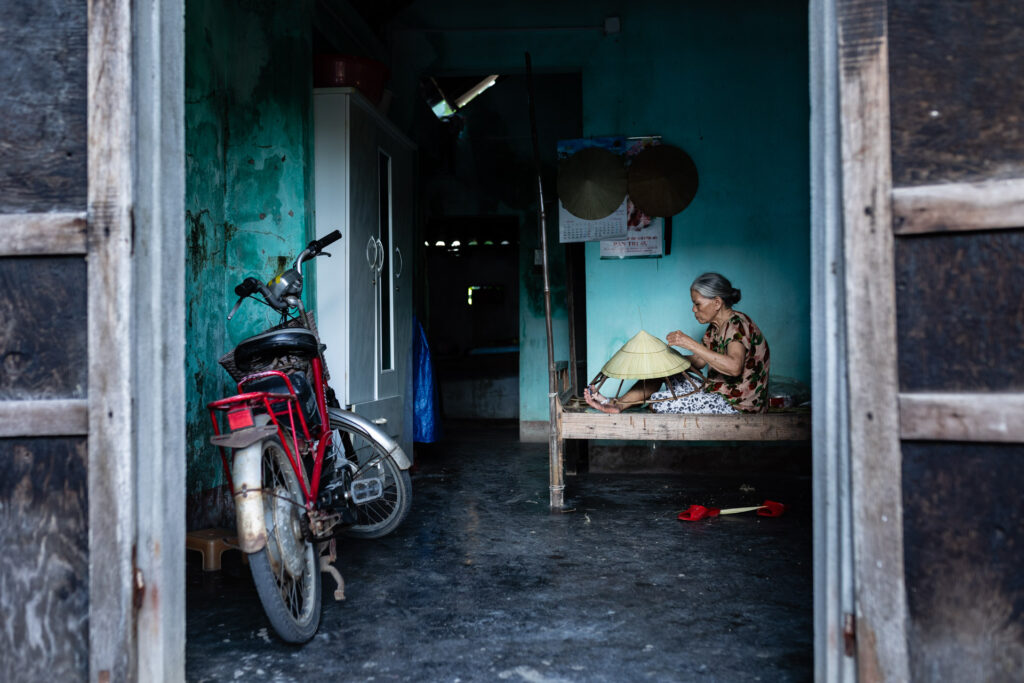
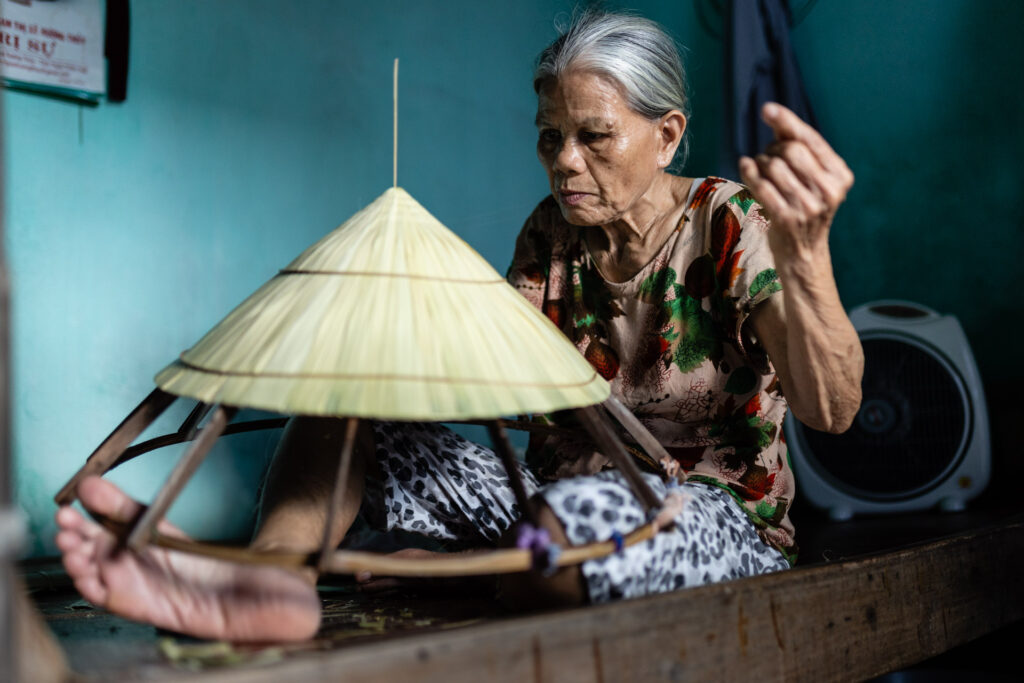

We must always remember to respect the authenticity of our subjects and their surroundings. It would have been downright disrespectful to start rearranging things or asking the women to don traditional attire just for the sake of enhancing an already remarkable reality. We were there to capture the true essence of their craft, not to impose our own vision upon it. So, let this be a lesson to all aspiring photographers: embrace the unexpected, find beauty in the unconventional, and never underestimate the power of a motorbike in a hat-making workshop.
For that reason, travel photography is for me all about embracing the unexpected and finding beauty in the everyday. It’s about capturing the small moments that make a place special. These are the moments that tell the real story of a place, and they’re often the ones that we treasure the most when we look back on our travels.
And you? What kind of Travel Photographers are you?
Don’t hesitate to leave your personal feelings and share your travel experiences in the comment below.
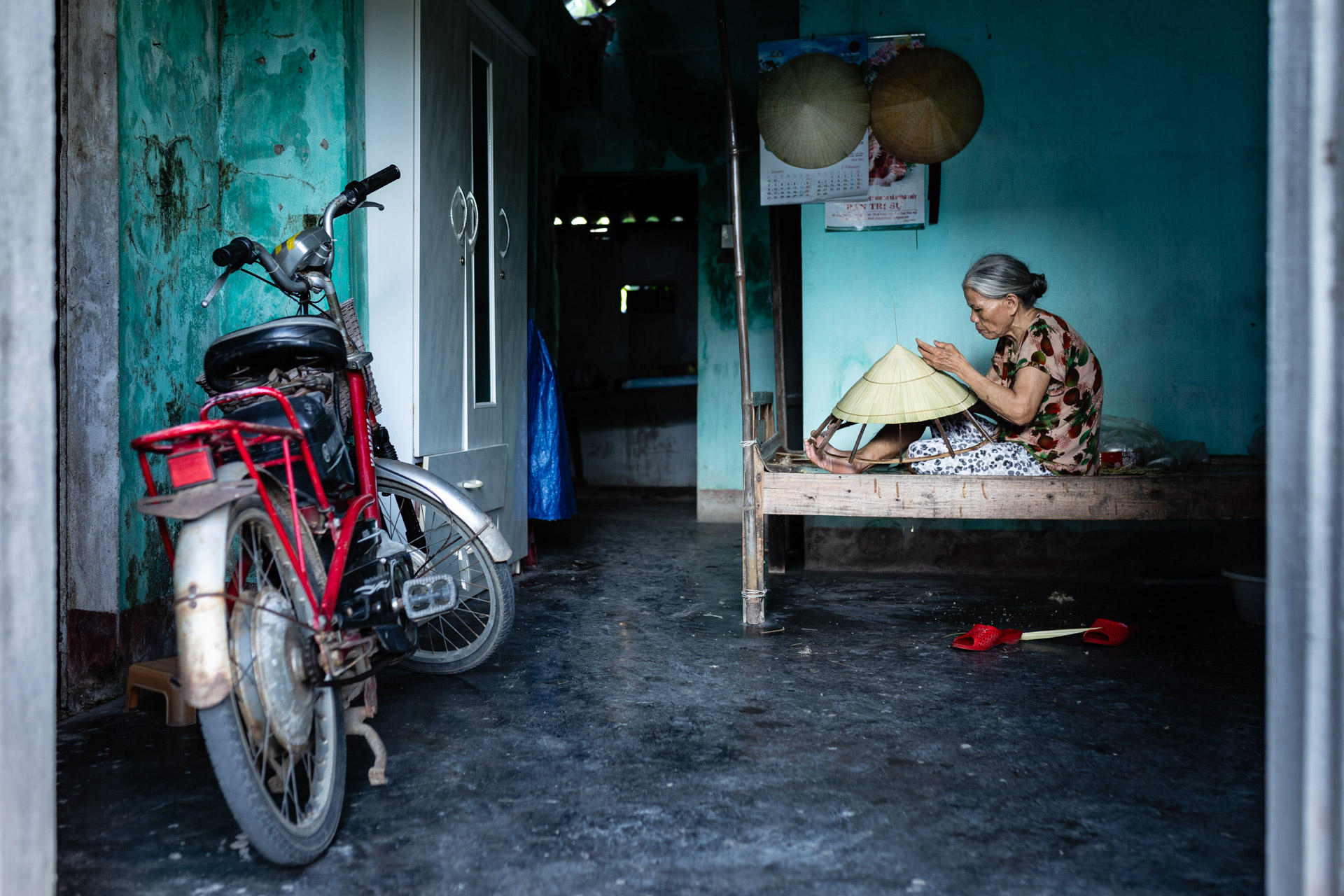
What a fantastic read, there is not much to add, still remember rushing to the stream to catch the girl picking lillies or hiding behind a log cause of the buffalos.
Adrenaline 😀
Xin chào Régis !
Ah-la-la, quel vaste débat et de quelle jolie manière tu as pris soin de le traiter. Ca me travaillait depuis un moment, mais sincèrement je n’aurais pas pu mieux dire 🙂
Tu as tout abordé, sans rien renier ni critiquer (chacun ses goûts et ses objectifs), mais en insistant sur l’honnêteté et l’inattendu, et ces 2 mots se complètent parfaitement.
A la suite d’un séjour en Indonésie et de la lecture de ton billet, je retrouve ces deux genres de photographie de voyage :
– La photo mise en scène qui, comme tu le dis, devrait théoriquement s’adresser au marché de la publicité et de la communication, mais qui s’adresse depuis quelques années aux “workshops photo” pour permettre à chacun de rivaliser sur le thème de “qui aura (re)fait la plus belle photo” et de rentrer (peut-être ?) à la maison avec la satisfaction d’avoir coché les cases du cahier des charges.
– La photo de voyage quasi-documentaire : au final ces 4 images de cette dame réalisant un chapeau conique illustrent un métier, voire un mode de vie, plus qu’une “esthétique pure” (si je prends comme référence une photo mise en scène) : il s’agit donc aussi d’un choix, d’un type d’approche et d’un objectif à atteindre. Cela peut d’ailleurs répondre aussi à des impératifs commerciaux, comme faire connaître l’artisanat rural de telle ou telle province, faire un reportage, etc.
Mais je me souviens aussi de cette fin d’après-midi au Cambodge où tu as observé puis discuté avec ces pêcheurs de tiges de fleurs de lotus, pour finalement revenir ensemble le lendemain à l’aube pour suivre leur récolte aquatique.
On était ici finalement un peu à la croisée des deux mondes : il y a d’abord eu une conversation improvisée qui a permis de saisir l’opportunité d’une situation photogénique, puis il y a eu une forme de coopération du sujet qui, le moment venu, a ralenti son geste ou s’est exposé de manière à ce que le photographe soit dans les meilleurs conditions possibles. Sans parler de mise en scène, un dialogue s’est installé pendant la cueillette, qui a magnifié l’inattendu pour le rendre encore plus photogénique.
La réponse n’est donc pas forcément binaire “la mise en scène c’est le Mal, la spontanéité c’est le Bien”, parfois elle se situe entre les deux. Quand quelqu’un se sait photographié, il n’est de toute façon plus totalement lui-même.
Un dernier point : mes photos “mises en scène” attirent plus de likes et plus de commandes que mes photos “non mises en scène”. Je ne suis peut-être pas doué instinctivement pour les portraits, c’est possible, mais je suis aussi forcé de penser au business : il peut exister aussi un besoin de valoriser et de vivre de son travail même en photographie “de voyage”, or le client choisit ce qui lui plaît et pas forcément ce qui me plaît. Cela implique parfois de savoir faire des concessions. A moins de rester fidèles à ses principes en gagnant alors peut-être moins bien sa vie.
J’aime toujours beaucoup te lire et pour une fois c’est moi que tu lis. 😀 Merci pour ton retour plein de vérité en effet avec comme tu le décris ces petits entre deux… Il y a un ordre de grandeur dans la mise en scène en effet mais je ne ferai jamais de copier coller et encore moins déformer la vériter de 2023 pour attirer d’éventuels clients. J’aime trop la spontanéité, la difficulté, l’instant car je suis un photographe documentaire de coeur. 🙂
Merci pour ton retour et au plaisir de continuer à suivre vos aventures et peut être unjour de se recroiser ici ou ailleurs!